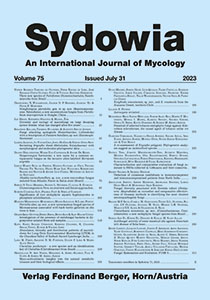
Fungal diversity associated with Bemisia tabaci (Hemiptera: Aleyrodidae) on cucumber and comparative effectiveness of bioassay methods in identifying the most virulent entomopathogenic fungi Abdulnabi Abbdul Ameer Matrood, Abdelhak Rhouma, Lobna Hajji-Hedfi & Mohammad Imad Khrieba Sydowia 75: 269-282 Published online on February 7th, 2023 Bemisia tabaci is a serious pest of cucumber, in Iraq, that reduces the income of farmers by high losses in yield. This study aimed to identify entomopathogenic fungi from whitefly cadavers and to evaluate their relative frequency and various structural attributes. The suitability of two bioassay methods and the virulence of two entomopathogenic fungal species were evaluated for management of B. tabaci under greenhouse condition. Out of the 16 fungal species isolated from the whitefly cadavers, only two species were confirmed microscopically as known entomopathogenic species: Mucor sp. and Purpureocillium lilacinum with a relative frequency of 8.65 and 5.82 %, respectively. Results of the principle component analysis indicated that the first two PCs explained 99.30 %. Three factors had a significant positive correlation with relative frequency of the fungal species which are species diversity (r= 0.983), Simpson’s concentration of dominance (r= 0.951) and equitability of evenness (r= 0.996). The greatest mortality effect on B. tabaci nymphs and adults due to P. lilacinum and Mucor sp. was recorded on the 7thday after inoculation, with an average mortality more than 60 % (with concentration of 106 conidia/ml). P. lilacinum and Mucor sp. were significantly twice as virulent to nymphs than to adults. However, no significant differences were observed between mortality rates of the two methods. To control B. tabaci nymphs and adults in the field within IPM strategies, we recommend more trials in order to analyze the real efficacy of P. lilacinum and Mucor sp. under field conditions. Keywords: Bemisia tabaci, Bioassay methods, Cucumis sativus, Entomopathogenic fungi, fungal species diversity. |
 |